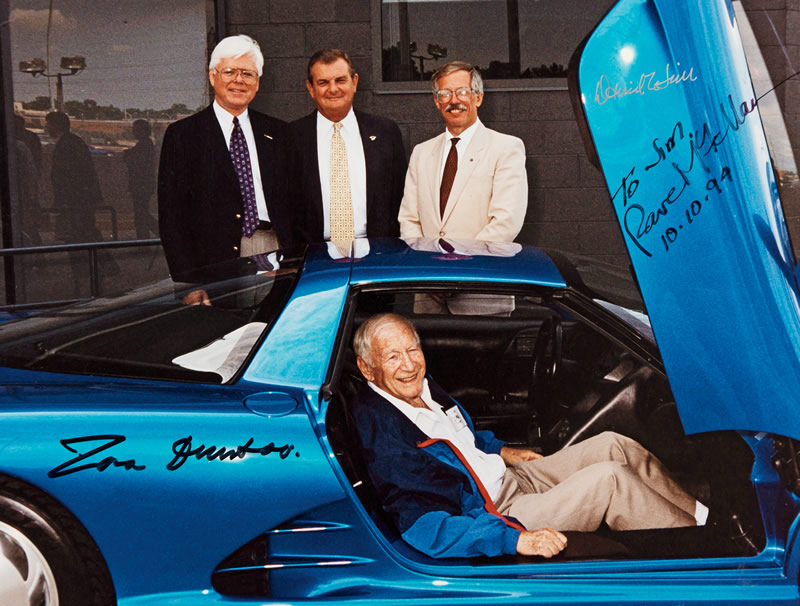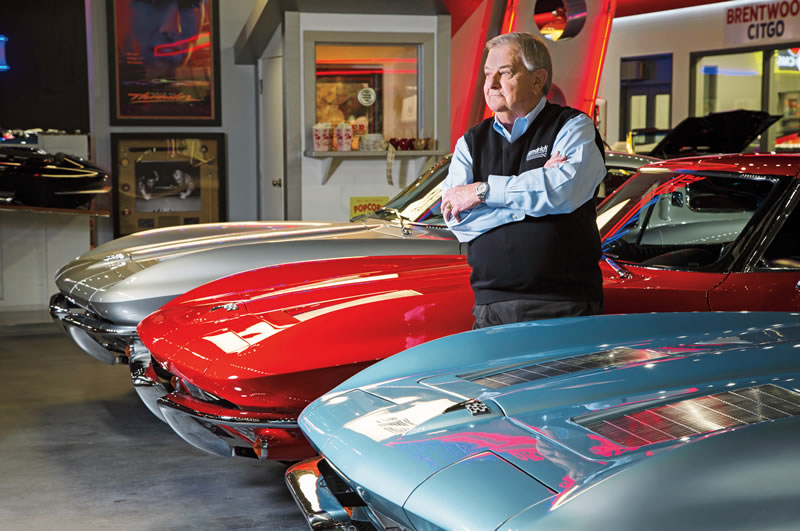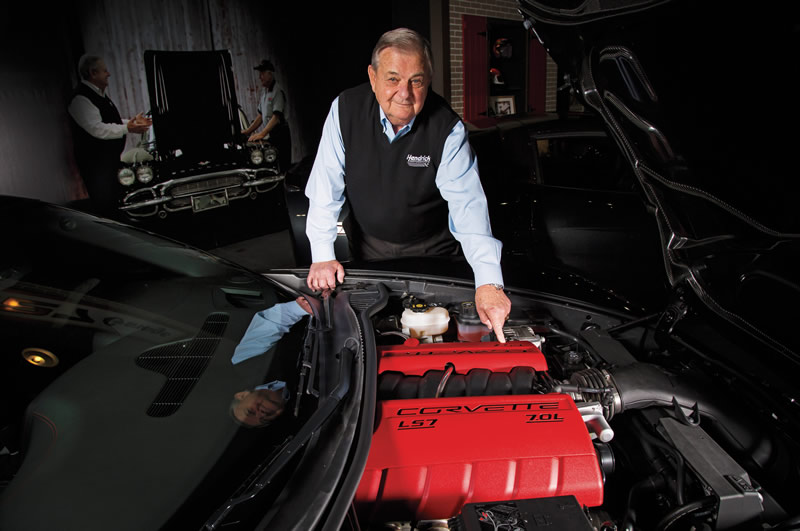In 1992, the atmosphere at GM was bleak. Sales were down, and Chevrolet was quickly losing its excitement and brand identity by utilizing the sharing of parts across multiple platforms in order to decrease cost.
As a result, the Corvette was on the chopping block and GM wanted the Corvette to die a slow death “without much fanfare”.
One man did not agree and literally put his job on the line to save the Corvette from extinction. That man was Jim Perkins, Chevrolet’s General Manager at the time.
Jim Perkins grew up in Waco, Texas and started his automotive career in 1960 working as a parts sorter at a Chevrolet warehouse. Jim was a hot-rodder and drag racer and wasn’t really into Corvettes at the time. He worked his way up the ladder and eventually became General Manager of Buick.
In 1984, he went to work at Toyota and oversaw the design, development and introduction of Lexus, Toyota’s first luxury brand. However, GM hadn’t forgotten him. Four years later, they lured him back and he succeeded Bob Burger, as Chevrolet’s General Manager.
In 1992, Joe Spielman who was the head of manufacturing, walked into Perkins’ office and told him that there was a rumor going around that the 1997 C5 Corvette development program was getting the axe and that the funds allocated to that program were needed to develop the H-platform – Chevrolet’s up and coming new full-size sedan.
In an interview with Motor Trend, Jim Perkins stated:
“Dave Hill had just become Corvette chief engineer, the next-gen car was on paper, and we were close to where we couldn’t pay our bills. So we looked at the Chevy marketing budget. We put about two and a half million dollars of marketing money into the program.”

“We got into hydroformed rails and alloy suspension parts to lighten it up and put a lot of rigidity into it, and we were ready to put a body on it. We put on a raggedy old C4 body and were driving it at the Mesa, Arizona, Desert Proving Grounds, and everybody was pretty well blown away. For example, when you ran over the ripple strips with the old car, you got memory shake that would rattle your teeth. But the C5, even with that old C4 body on it, just settled down and burrrrp, ran over it. So we knew we had something.”
Perkins brought his case to continue the C5 Corvette program to the higher-up at Chevrolet-Pontiac-Canada (CPC) and had a point blank conversation with them explaining the brand importance of the Corvette and that if they didn’t see the importance of the Corvette platform, then maybe he shouldn’t be at Chevrolet.

CPC understood and agreed with where Perkins was coming from, but their main concern was where the funding was going to come from. Little did they know, Perkins had been reallocating funds from other GM accounts, such as marketing to secretly continue the development of the C5 program.
In an interview with Automotive News, Ralph Kramer, former head of Chevrolet Public Relations said, “It was Perkins who found the money to go ahead and get the prototypes built. If it wasn’t for that, that car was destined to be shelved. He had the opportunity to move some funds around and he did that surreptitiously, causing no end of anguish among the auditors.”
Two years into C5 Corvette production, Chevrolet was selling more than 30,000 C5 Corvettes and became one of the most successful programs at Chevrolet.
In 1996, at the age of 61, Perkins retired from GM and a year later became CEO of the Hendrick Automotive Group in Charlotte, North Carolina.
On Friday, December 28th, 2018, Jim Perkins quietly passed away in Charlotte, North Carolina, at the age of 83, earning him tributes from Corvette enthusiasts around the world.
Thank you Mr. Perkins for saving the Corvette and having the vision and passion when others were blind around you.

